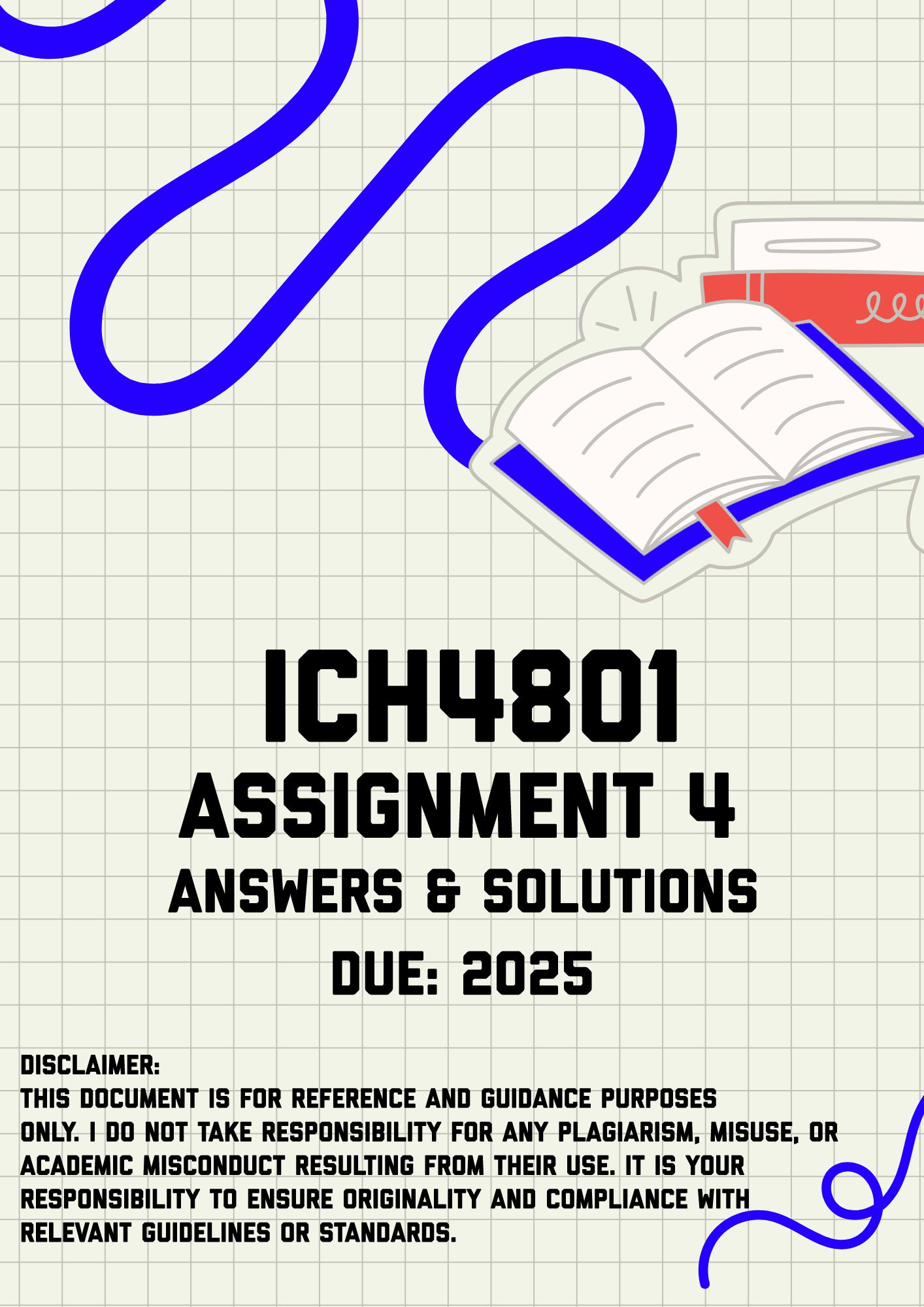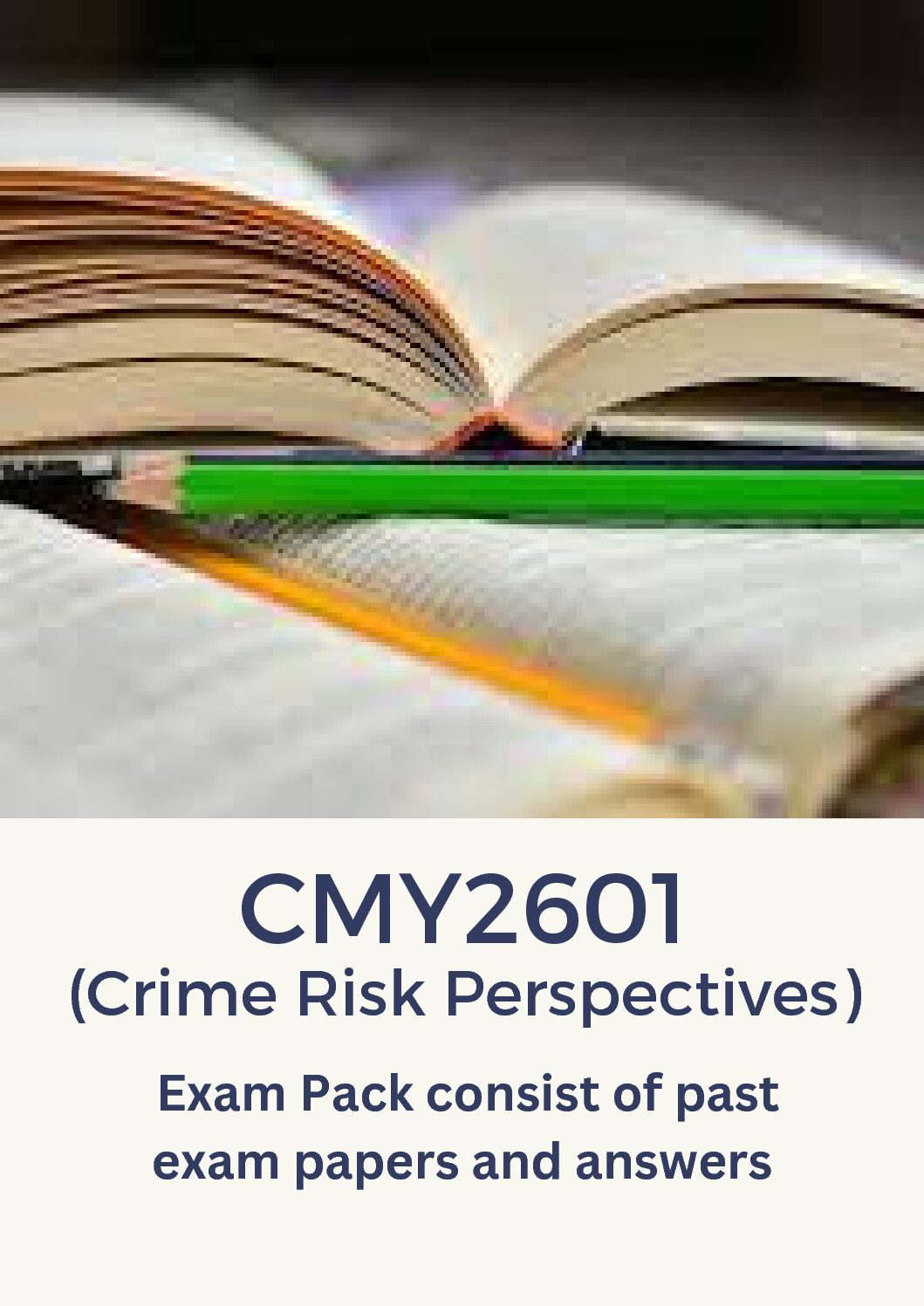Description
ICH4801 Assignment 4 Memo | Due 2025. All questions fully answered. SECTION A: HISTORY OF EDUCATION [50] Question 1 Section A is based on the given extract from chapter 2 of the prescribed textbook (Seroto, Davids & Wolhuter 2020). Read the extract and then answer the questions that follow. Geographical focus of research and of authorship Scholars, analysts, progressive scholars and academics in all education sciences and beyond, have expressed concern that the corpus of scholarly publications is dominated by researchers in the global world and that their focus is lopsided in favour of the Global North or themes favoured by the interests of the Global North. In a content analysis of articles published in the first 50 years of the top journal in the field of Comparative and International Education, the Comparative Education Review, Wolhuter (2008:330-331) found that countries of the Global North dominate the geographical focus of research. In addition, where countries of the Global South are the subject of research, it is dominated by researchers from the Global North (cf Wolhuter, 2018). Of the 18 523 articles published in the total pool of Thomson-Reuters indexed education journals for the year 2012, a mere 2.13% were authored by scholars in Africa (ibid). Depaepe and Simon (1996) do not include the geographical terrain of articles in their research but do provide an interesting analysis of author provenance. For the articles published during 1961 to 1989 in Paedagogica Historica, the rank-order of national provenance of authors is illustrated in table 2.2. The pattern for the period 1990 to 1995 does not differ much. However, in this period, the Global South fares worse with 1.6% of all authors (South Africa: 0.8% and Zaire: 0.8%) as shown in table 2.3. Assignment 04 Comparative and International Education Due date: Unique assignment number: ICH4801/101/0/2025 37 Table 2.2 National provenance of authors published in rank order, 1961 to 1989 National provenance of authors (Global North) 1961 to 1989 1. Germany: 22.7%; 2. US: 21.5%; 3. UK: 10.6%; 4. France: 7.4%; 5. Belgium: 6.5% National provenance of authors (Global South) 1961 to 1989 1. India: 1.2%; 2. Malaysia: 1.2%; 3. Nigeria: 0.6%; 4. Sri Lanka: 0.6%; 5. Argentina: 0.3%; 6. Oman: 0.3%; 7. Pakistan: 0.3%; 8. South Africa: 0.3%; 9. Thailand: 0.3%; 10. Zimbabwe: 0.3% (Source: Depaepe & Simon, 1996:426) Table 2.3 National provenance of authors published in rank order, 1990 to 1995 National provenance of authors (Global North) 1990 to 1995 1. Netherlands: 20.2%; 2. Germany: 17.8%; 3. Belgium: 14.0%; 4 France: 10.1%; 5. US: 7.0% National provenance of authors (Global South) 1990 to 1995 1. Only 1.6% of all authors in the Global South; 2. South Africa: 0.8%; 3. Former Zaire: 0.8% (Source: Depaepe & Simon, 1996) Freeman and Kirke (2017) deal with geographical foci in their analysis, although the limitation of their study is that it covers English medium journals only. Freeman and Kirke (2017:830) found that in geographical coverage, throughout the period 1952 to 2016, England and Great Britain dominated as geographical terrain of study. During the decade 1980 to 1989, 43.9% of all published articles dealt with England and Great Britain; in 2016, 25.7% of all published articles focused on England and Great Britain. While colonialism and colonial education policy remain an area of interest in the field, as do race and ethnicity, two provisos should be mentioned. On the second (race and ethnicity), research has been spurred by events in the Global North and is dominated by the Global North as terrain. These events include the 1960 Civil Rights Movement in the United States of America, the school desegregation movement in the same country, right up to the #BlackLivesMatter movement in the USA and the immigration patterns and increasingly multicultural composition of the population of the United Kingdom (UK). In 2016, 14 of the 19 articles in the SECTION A: HISTORY OF EDUCATION [50] Question 1 Section A is based on the given extract from chapter 2 of the prescribed textbook (Seroto, Davids & Wolhuter 2020). Read the extract and then answer the questions that follow. Geographical focus of research and of authorship Scholars, analysts, progressive scholars and academics in all education sciences and beyond, have expressed concern that the corpus of scholarly publications is dominated by researchers in the global world and that their focus is lopsided in favour of the Global North or themes favoured by the interests of the Global North. In a content analysis of articles published in the first 50 years of the top journal in the field of Comparative and International Education, the Comparative Education Review, Wolhuter (2008:330-331) found that countries of the Global North dominate the geographical focus of research. In addition, where countries of the Global South are the subject of research, it is dominated by researchers from the Global North (cf Wolhuter, 2018). Of the 18 523 articles published in the total pool of Thomson-Reuters indexed education journals for the year 2012, a mere 2.13% were authored by scholars in Africa (ibid). Depaepe and Simon (1996) do not include the geographical terrain of articles in their research but do provide an interesting analysis of author provenance. For the articles published during 1961 to 1989 in Paedagogica Historica, the rank-order of national provenance of authors is illustrated in table 2.2. The pattern for the period 1990 to 1995 does not differ much. However, in this period, the Global South fares worse with 1.6% of all authors (South Africa: 0.8% and Zaire: 0.8%) as shown in table 2.3. Assignment 04 Comparative and International Education Due date: Unique assignment number: ICH4801/101/0/2025 37 Table 2.2 National provenance of authors published in rank order, 1961 to 1989 National provenance of authors (Global North) 1961 to 1989 1. Germany: 22.7%; 2. US: 21.5%; 3. UK: 10.6%; 4. France: 7.4%; 5. Belgium: 6.5% National provenance of authors (Global South) 1961 to 1989 1. India: 1.2%; 2. Malaysia: 1.2%; 3. Nigeria: 0.6%; 4. Sri Lanka: 0.6%; 5. Argentina: 0.3%; 6. Oman: 0.3%; 7. Pakistan: 0.3%; 8. South Africa: 0.3%; 9. Thailand: 0.3%; 10. Zimbabwe: 0.3% (Source: Depaepe & Simon, 1996:426) Table 2.3 National provenance of authors published in rank order, 1990 to 1995 National provenance of authors (Global North) 1990 to 1995 1. Netherlands: 20.2%; 2. Germany: 17.8%; 3. Belgium: 14.0%; 4 France: 10.1%; 5. US: 7.0% National provenance of authors (Global South) 1990 to 1995 1. Only 1.6% of all authors in the Global South; 2. South Africa: 0.8%; 3. Former Zaire: 0.8% (Source: Depaepe & Simon, 1996) Freeman and Kirke (2017) deal with geographical foci in their analysis, although the limitation of their study is that it covers English medium journals only. Freeman and Kirke (2017:830) found that in geographical coverage, throughout the period 1952 to 2016, England and Great Britain dominated as geographical terrain of study. During the decade 1980 to 1989, 43.9% of all published articles dealt with England and Great Britain; in 2016, 25.7% of all published articles focused on England and Great Britain. While colonialism and colonial education policy remain an area of interest in the field, as do race and ethnicity, two provisos should be mentioned. On the second (race and ethnicity), research has been spurred by events in the Global North and is dominated by the Global North as terrain. These events include the 1960 Civil Rights Movement in the United States of America, the school desegregation movement in the same country, right up to the #BlackLivesMatter movement in the USA and the immigration patterns and increasingly multicultural composition of the population of the United Kingdom (UK). In 2016, 14 of the 19 articles in the












Reviews
There are no reviews yet.